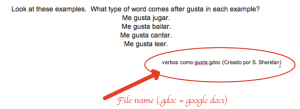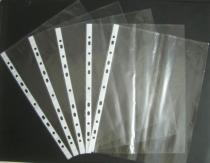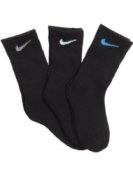Dear readers,
I have moved my site to the following address:
http://supersenoritasspanishstuff.weebly.com/
I hope you will follow me there for great new content! Thanks for reading!
Dear readers,
I have moved my site to the following address:
http://supersenoritasspanishstuff.weebly.com/
I hope you will follow me there for great new content! Thanks for reading!
I have been thinking about getting back into blogging for a little while now and today I’ve decided is as good a day as any! I started this blog as a way to share time-saving ideas with teachers, but I think I am going to expand now to include snap shots from my own classroom in the hopes that it will help fellow Spanish teachers or anyone that is just looking for some new ideas! My goal is to write once a week. Wish me luck!
 Today’s post is about this fantastic free app called Duolingo. It is a wonderful tool for differentiation, especially for your high-achievers who always finish early. Simply have students log-on to the website or mobile app and let them choose from a multitude of available languages to learn. They will be engaged in their learning and you won’t have to worry about disruptive behavior! Plus – NO PREP! To find out some more interesting ways to integrate it into your classroom, consider purchasing my Duolingo supplement bundle on TpT, which includes some posters and tracking documents for some friendly whole class competition!
Today’s post is about this fantastic free app called Duolingo. It is a wonderful tool for differentiation, especially for your high-achievers who always finish early. Simply have students log-on to the website or mobile app and let them choose from a multitude of available languages to learn. They will be engaged in their learning and you won’t have to worry about disruptive behavior! Plus – NO PREP! To find out some more interesting ways to integrate it into your classroom, consider purchasing my Duolingo supplement bundle on TpT, which includes some posters and tracking documents for some friendly whole class competition!
My school became a Google only school a few years ago and so our kids don’t print anymore, but they “share” their docs. It’s a very cool feature, but frankly, I hate receiving 110 emails titled “Bobby M. has shared Untitled with you!” Here’s my work-around:
1. Create a google doc and give all students editing access. (In the share section, choose anyone with the link can edit.)
2. I create a table for each class period with each student’s name. Instead of sharing their doc with me, they highlight their name and paste the link to their doc. This way I have everyone’s project in one place and if I want them to look at each other’s’ work, or for parents to see work, I just post the turn-in page on my website.
Here’s a SAMPLE.
TIME SAVER TIP: Create a doc at the beginning of the year with your class lists and label it something like “Turn in Master.” For each new assignment, go to File > Make a Copy. Then you can just change the title of the doc and not have to retype everyone’s names.
I’m a visual person when I lesson plan. It’s helpful for me to see what I have. I know many teachers keep file folders full of handouts, but I use a binder where I put all handouts, organized by unit. After 8 years of teaching, I have created about 6 pretty hefty binders of materials, so recently I have created my “take-home binder.” I have a divider in it for each different prep, and I transfer whatever current unit I’m working on for each class to that binder to easily transport back and forth as necessary.
I also add a footer to each document I create with the file name. That way, when I catch mistakes I’ve made, I can easily find the file on my computer to modify it for next time. This was helpful when my school switched from Word to Google Docs, and I couldn’t remember where I made the document: .doc for Word and .gdoc for Google Docs.
 I can’t take credit for this because I got the idea from my friend Holly, but I think it’s a great one! I do a lot of games where students receive a paper game board that they need to write on. I used to photocopy a new set each time we played and students would recycle them when they finished playing. Now I invested in several boxes of plastic sheet protectors. I put the game board in the plastic and give each student a dry-erase marker and a sock. (Another time saver: buy black socks at the dollar store and put your dry-erase markers inside the sock. Then you are only passing out one thing to each student and the sock doubles as an eraser. Plus, because its black, you don’t see the dirt!) They draw on the plastic page protector and erase when they finish. Then I recollect the pages and reuse them with the next class!
I can’t take credit for this because I got the idea from my friend Holly, but I think it’s a great one! I do a lot of games where students receive a paper game board that they need to write on. I used to photocopy a new set each time we played and students would recycle them when they finished playing. Now I invested in several boxes of plastic sheet protectors. I put the game board in the plastic and give each student a dry-erase marker and a sock. (Another time saver: buy black socks at the dollar store and put your dry-erase markers inside the sock. Then you are only passing out one thing to each student and the sock doubles as an eraser. Plus, because its black, you don’t see the dirt!) They draw on the plastic page protector and erase when they finish. Then I recollect the pages and reuse them with the next class!


I know other teachers that use this method for stations. Rather than making each kid his/her own copy when you know they will throw it out later, make enough for 5-10 kids to work on it at a time and then rotate stations. I’ve seen teachers use it to make worksheets more fun too because kids are already more engaged when they get to use the dry-erase marker. All of the sudden math facts, grammar, and balancing equations isn’t so bad!
Here are 2 games that I have learned from other teachers ( who would receive credit here if I remembered names!).
1. Ladder races: I play this game to teach conjugating verbs, but I guess it could be played with math problems, English parts of speech, or procedural events in science. Have students sit in rows of 3-6. Copy enough ladders for each team to have one and place in a plastic sheet protector. Give each student his/her own marker. Each student has to fill in a rung of the ladder and then pass it to the next person. The first team to hold their board up in the air with all the correct answers gets 2 points. Each team who is correct after that (within reasonable time limits) gets 1 point.
2. Plaza de toros (Bull pen) – Create a template (or purchase mine on Teachers Pay Teachers) with vocabulary terms and copy enough for students to play in pairs. Give each student a game board in a plastic page protector and a dry-erase marker. Call out a word or a definition (math teachers could call out a mental math problem and have them find the answer). The objective is to be the first player to touch the correct word. Whoever touches the correct word first gets to color it in or write his/her initials in it. I tell students to be fair judges, and if they tie, to each claim half the bull. (I realize this document is in Spanish. Email me if you want an editable version to adapt for your class.)
I create a lot of games and activities with pieces or cards. Usually it’s just a piece of colored paper laminated, cut into several pieces, and stored in a ziploc baggie. But inevitably, at the end of the day, there are always some pieces that wind up on the floor and you have no idea which bag they came from. To solve this problem, I have begun numbering the pieces on the back. If I create a puzzle with nine pieces, I will label all 9 pieces with the same number in pencil before I laminate it and before the kids cut it apart. Then I also label the ziploc baggie with a matching number. This way, when pieces wind up on the floor, I know where to put them back.
Another time saver: Have kids help you! You don’t have time to cut out 24 puzzles with nine pieces each. The first time I make something new, I let my first class cut out the pieces and then it’s ready for all future groups.
Here are some puzzle sentences I use with my students that I use this trick with!
This year I have a group of overly cautious students. They are convinced that they need help immediately. Last week I passed out a differentiated activity with a checklist, and students went crazy with questions even though everything was written out for them. The next day I told students I would set a timer for 5 minutes. In those 5 minutes they could use their notes and ask each other for help, but I would not answer any questions. At first, they all panicked and wanted help. I stayed strong and just pointed to the clock. And – miracle of miracles! – they started to read the directions and ask each other for help!!! By the time the buzzer went off, there were only a few questions and they were actually curricular-related as opposed to I-don’t-feel-like-reading-the-directions-myself questions. At the end of class, I made sure to praise my students for working so independently and point out that they just needed a few minutes to allow themselves to think on their own. I think something may have clicked!